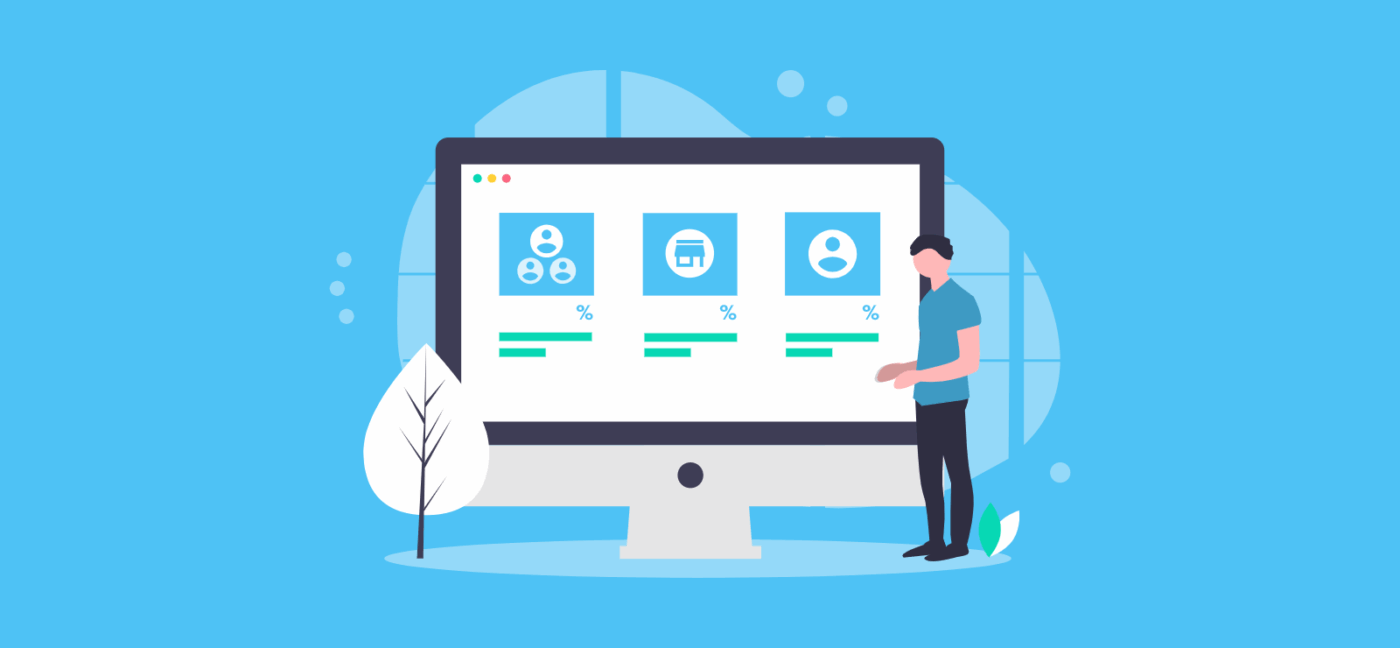

Can I Claim Clothes and Uniforms as an Expense?
Working out tax and allowable business expenses can be confusing at the best of times. The general rule is that something must be “wholly and exclusively for business” if you’re going to claim it as an expense, so claiming for clothes and uniforms depends on usage.
If you use those clothes for work, and only work, and have to use that particular item for safety or branding, then it’s most likely an allowable expense. But like most things, it’s not always as straightforward as it seems.
What does HMRC consider to be a ‘uniform’?
HMRC is quite specific about what it considers to be a uniform. Basically, it needs to be a specialised piece of clothing that distinguishes someone’s occupation clearly.
Often, simply sewing a permanent badge or logo onto a garment is enough to call it a uniform for tax purposes. Simply pinning a detachable badge on doesn’t cut it unfortunately.
If you work as a door attendant or waiting staff, your job might mean you have to wear formal evening dress. If this is the case, dinner jackets and trousers can be treated as uniform, and therefore a tax relief claim may be made. Tax relief can’t be claimed for the initial purchase of the uniform, unless you’re self-employed or you’ve bought the uniform yourself and your employer has not reimbursed you.
If you need to regularly wash your uniform, you may also be able to claim tax relief on the cost of this, which we’ll cover later. Just keep in mind that if your employer provides the facilities to wash your uniform at work, but you decide not to use them, then no tax claim can be made.
Clothing expenses: The three golden rules
There are three broad rules which apply to claiming clothing as an expense in your business.
Part of a uniform has your branding on it
There are some professions which we typically associate with wearing a uniform, such as nursing, firefighting, or the police. Plenty of other organisations also require employees to wear a uniform as part of the brand’s image, though.
So, clothing that has the company logo is also allowable. The branding or logo must be obvious and can’t be removed or easily hidden.
A costume
Should you ever find yourself dressing up as a pizza to promote your takeaway food business, you can breathe a sigh of relief. You’ll be able to claim for your attire as it clearly constitutes a costume. Other examples include an actor’s costume for a stage production, or a suit for a professional clown or magician.
Personal protective clothing and equipment
The nature of your work might make it necessary to wear PPE to protect yourself from injury or infection. For instance, helmets, eyewear or other equipment are all an allowable expense.
What clothes can’t you claim for as a business expense?
The common theme here is that you can only claim for clothing if you’re able to demonstrate it’s solely for work. HMRC take a hard line against dual usage in expenses and business costs.
There are some grey areas though, such as with fitness instructors or personal trainers. Some may argue that the clothing they need for work can also be worn for their own personal workouts. This would exclude it from being an allowable expense as far as HMRC are concerned.
If it clearly shows the business logo and branding, and is only worn to teach those particular classes, then it’s allowable. The difficulty here might be proving it one way or another. Other examples of clothes that you can’t claim for include:
- ‘Everyday’ clothes, even if you know you keep them for work and work only. This could apply to professions such taxi drivers, dog walkers, or freelance wedding photographers who set smart clothes aside for when they’re on duty.
- Your favourite pyjamas and comfiest slippers, just because that’s what you like to wear when you’re working from home.
How do I claim a uniform against tax?
The first thing to point out here is that for employees this isn’t a tax exemption, it’s a tax rebate. As an employee you’ll have already paid the tax through PAYE, and it’s this that you’re claiming as a refund.
You can apply online by filling in form P87, or by post. Send it to: Pay As You Earn, HM Revenue & Customs, BX9 1AS and include ‘Repayment Claim’ on the envelope.
If you’re self-employed, you claim it through your tax return as an allowable business expense. What type of tax return you submit depends on how your business is structured.
You may be able to make a flat rate claim (depending on your job) or claim for the actual cost. We’ll look at flat rates in a moment.
How will the rebate be paid to me?
If you’re employed, once HMRC receives your claim your tax code will then be adjusted so that you won’t pay as much tax every month. If you’re making a claim for a previous year, HMRC will either adjust your tax code, or they will pay it as a credit into your bank account.
As someone who is self-employed, you’ll need to claim via your tax return, which will reduce the profit figures you report, and therefore reduce your tax bill.
Can I claim uniform tax relief for previous years?
Yes, uniform tax relief can be claimed for up to the previous four years. This is still the case even if you’ve moved jobs in that time and no longer work for that particular employer.
What is the flat rate claimable for uniform expenses?
A flat rate which employees can claim has been arranged with the government. This makes the process of claiming the relief a lot easier, mainly because it doesn’t rely on you keeping records.
If you’re claiming your expenses using the flat rate, it means you can get a standard set amount every year. How much this will be is dependent on your job title and what industry you work in.
Below we’ve listed some of the main industries that qualify for a flat rate and their 2025/26 rates, or you can find the full list of occupations on the Gov.uk website:
- Agriculture: £100
- NHS staff, including ambulance staff, nurses, midwives, and dental nurses: Up to £185
- Airline staff, such as pilots and co-pilots: £1,022
- Heating engineers and plumbers: Up to £120
- Public transport workers, including drivers and conductors: Up to £60
- Printing, including bench hands, ink and roller makers and machine minders: Up to £60
- Clothing, including knitters, lace makers and dyers: £60
- Forestry workers: £100
Some occupations can understandably claim for additional pieces of clothing over and above their standard uniform. This is allowed by HMRC and is simply due to the nature of the work staff have to carry out. For example, ambulance staff can claim for specialist uniform while nurses and midwives can claim for socks, tights, and shoes.
I’m self-employed. Can I claim anything to help with the cost of washing my uniform?
This is something we get asked quite a bit. As we’ve already covered, if you’re self-employed you can claim the cost of buying uniform as a business expense through your tax return.
If you can also work out how much each wash of your uniform costs (water, electricity cost, detergent etc) then you may be able to include washing it as a business expense too.
However, most people just use the flat rate instead as it’s much easier. If you’re not sure, seek professional advice from an accountant who can help you.
Which industries can claim laundry expenses?
Pretty much any job or industry where you’re required to wear a uniform can attract a claim to help with the cost of washing it. We’re not talking megabucks here, but let’s face it, in these times of soaring utility bills every little helps.
Obviously, some industries are heavier claimers than others when it comes to tax claims for laundry costs. In our experience some of the top ones are health and social care workers, maintenance workers, and people who are employed in construction.
So, how much can I claim for laundry expenses?
If you’re planning to claim back tax with regard to laundry costs, it must be the case that wearing your uniform in the first place is a necessity. If you’re employed you can make your claim yourself using form P87. As with your other expenses, self-employed people will need to include it in their tax return.
The current lowest flat rate which you can claim is £60. This means that if you’re a basic-rate taxpayer, 20% of that £60 can be claimed back.
Need some advice about your small business expenses? That’s what our team of friendly accounting professionals are here to help with. Drop us a line on 020 3355 4047 and get an instant online quote.
Want to learn more?
Subscribe to our newsletter to get accounting tips like this right to your inbox

Read more posts...

UK Tax Rates, Thresholds and Allowances for the Self-Employed
15th January 2026Read our guide to UK tax rates and thresholds for sole traders, limited companies, partners and partnerships, employers, and other businesses. Paying…
Read More
Scottish Income Tax Rates and Thresholds for 2025/26 and 2026/27
13th January 2026If you live or work in Scotland then you may need to pay tax on your earnings using the Scottish Income Tax…
Read More
How Much Is My Take Home Pay After Tax on 60k?
9th January 2026Working out how much tax you need to pay can be messy business – especially if maths wasn’t your best subject at…
Read MoreConfirm Transactions
The number of monthly transactions you have entered based on your turnover seem high. A transaction is one bookkeeping entry such as a sale, purchase, payment or receipt. Are you sure this is correct?
Please contact our sales team if you’re unsure
VAT Returns
It is unlikely you will need this service, unless you are voluntarily registered for VAT.
Are you sure this is correct?
Call us on 020 3355 4047 if you’re not sure.
Bookkeeping
You will receive our bookkeeping software Pandle for free, as part of your package.
You can use this to complete your own bookkeeping, or we can provide a quote to complete your bookkeeping for you.
Please select and option below:
Call us on 020 3355 4047 if you’re not sure.

